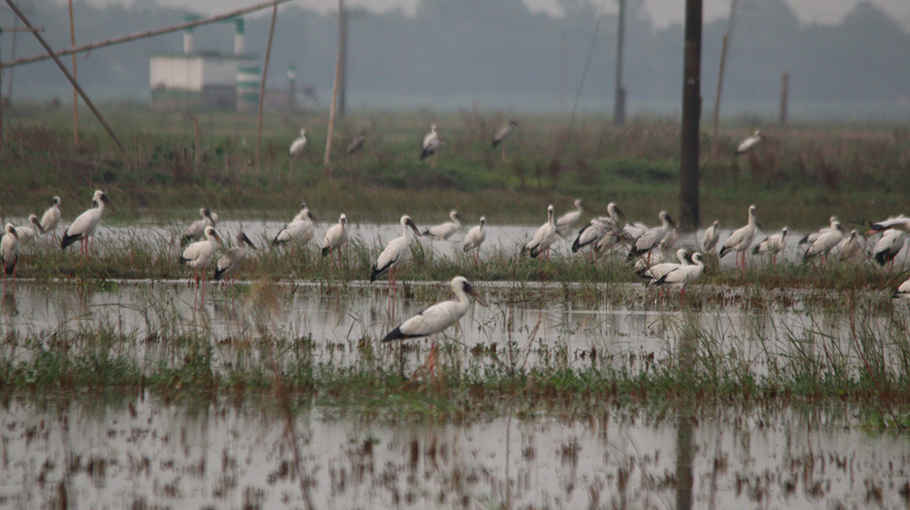Chatmohar turns into a haven for storks


Hundreds of Asian openbill (locally known as shamukkhol) storks have been roaming freely in different water bodies under Chatmohar upazila of Pabna district for the last several days as the areas have turned into a haven for the birds.
The birds roam freely along the canals, beels and other water bodies in the upazila. Even a few years ago, shamukkhol birds were not seen in this area but the number of the storks is gradually increasing in the region due to the availability of food, habitat and breeding facilities.
The birds have been making their nests on the high trees of the neighbouring villages of the beels. When the birds fly from one place to another in flocks, it creates a charming atmosphere.
In addition to Bangladesh, it is a resident bird of South and South East Asia, including India and Sri Lanka. Besides, shamukkhol birds are seen in many countries of the world. Black color can be seen on the back and wings of white coloured storks. The bird feels comfortable to stay in one area if it gets necessary food and security. In search of food, it leaves the nest in the morning and moves to places near water bodies. Small aquatic animals, including snails, oysters, frogs and crabs, are the main food of the storks.
YouTuber Siddique Milan of Baluchar Mahalla under Chatmohar municipality said birds are part of the natural environment. The free movement of shamukkhol birds in Chalan Beel area is increasing the beauty of the water body. Previously, such storks were not seen in this area, now hundreds of birds are seen in the fields and different beels, including Beilmari, Karkola, Gaurnagar and Bothor, in Chatmohar. This is certainly a matter of hope. However, due to the free killing of juvenile fish through various nets, including China Dwari and banned current nets, the fish species in Chalan Beel are continuously decreasing. Besides, some poor people in the area have been selling snails and oysters for long, so snails and oysters are also decreasing. If fish and other aquatic animals are protected, the number of this bird will gradually increase. Therefore, the administration should be careful. Public awareness should also be increased.
Bird lover Ashraful Alam Helal said the level of awareness has increased among the people of this area. The tendency of people to kill birds has decreased. Now people no longer kill shamukkhol birds freely. The administration is also active in stopping the killing of birds. There is an abundance of the storks in the shallow waters of the beel in the northern part of Chatmohar and on the land adjacent to the water. Since this area is next to the beel, the birds can easily get other food, including snails and oysters. Perhaps this is the reason why the number of shamukkhol birds is gradually increasing in this area.
Siddikur Rahman of Gaurnagar village under Nimaichara union said that three years ago, there was no shamukkhol bird in this area. The movement of the storks has increased in this area for the last two to three years. Now hundreds of shamukkhol birds can be seen next to the water bodies. They are living by making nests in the high trees of the villages adjacent to the reservoir.
Sujan Ahmed of Karkola village said many shamukkhol birds were seen in Karkola field this year. Humans usually do not disturb this bird. But out of curiosity, when some people go to take pictures, they get bored and move away.
Hasan Mahmud, organising secretary of Pabna's "Nature and Wildlife Conservation Community", said that shamukkhol is our native bird. The main food of this bird is snails. They move from one area of the country to another when they get bored or do not get food. They make nests in the area they consider liveable. There are several beels in Chatmohar. It is believed that the storks are roaming freely in this area with the necessary security and sufficient food in the beels.



